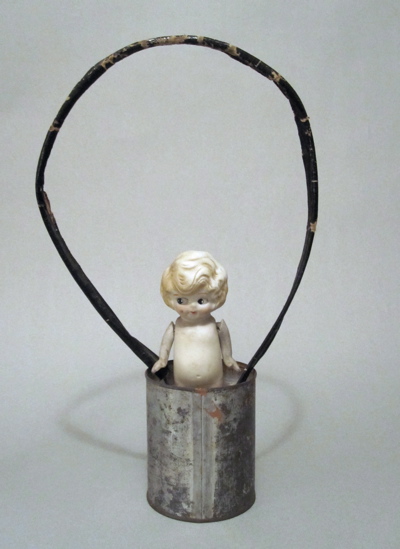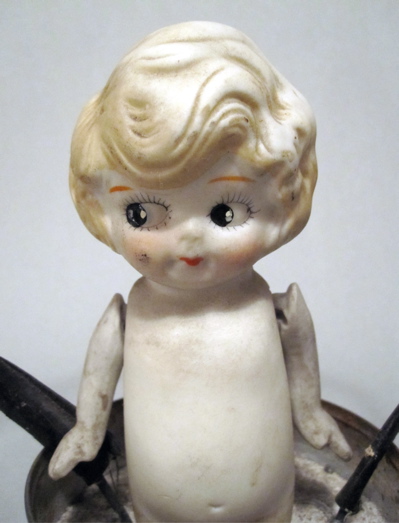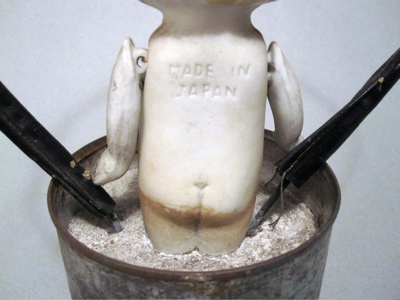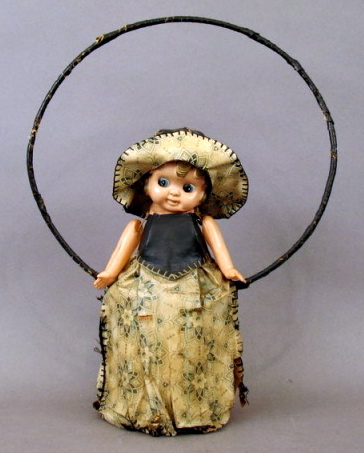This unusual door stop is an example of an item I had to buy, despite not liking it very much. But how could I pass up a broken doll-in-a-can door stop?
When this fragile bisque doll lost its legs, it was submerged in cement and put in to a tin can, along with a metal wire handle covered in oil cloth.
Based on the popular Kewpie doll of the 1910’s and with a nod to Betty Boop, these inexpensive Japanese dolls with “googly” eyes were given out as carnival prizes. I applaud the ingenuity of the family member who rescued the sad little girl’s broken toy, and brought it back to life as a useful household item.
Here’s another example of a doll-in-a-can door stop, but this one is fully adorned
Photo courtesy of Louwers Antiques
Tags: Japanese, metal handle




My grandparents had one of those 1930s girl in cement door stops
just like the one shown, but the cement is just a diamond shaped
block rather than using a can. The (white) wire is diamond shaped
also. Maybe they were exported with directions about making a base. They would be too heavy to ship as is, and likely too crude to be a big seller based on the 2 examples I’ve now seen.
I bought one at a thrift shop because I thought she was cute. Was wondering if anyone would know how to find an appraisal for her. Mine is fully clothed in a can also. Brown jacket with a red bow around her neck and a yellow porcelain bow in her hair.
I acquired one recently, thought she was just an adorable altered art doll, no idea the intent was as a doorstop. Mine is cemented in a can, has a blue coiled ribbon covered handle. She is dressed in a 2 part pink novelty cotton dress with pattern of yellow ducklings wearing bonnets and blowing bubbles. Her arms have been replaced with stuffed cloth arms to hold a bouquet.
I would love to see a pic of Susan Metcalf’s doorstop.